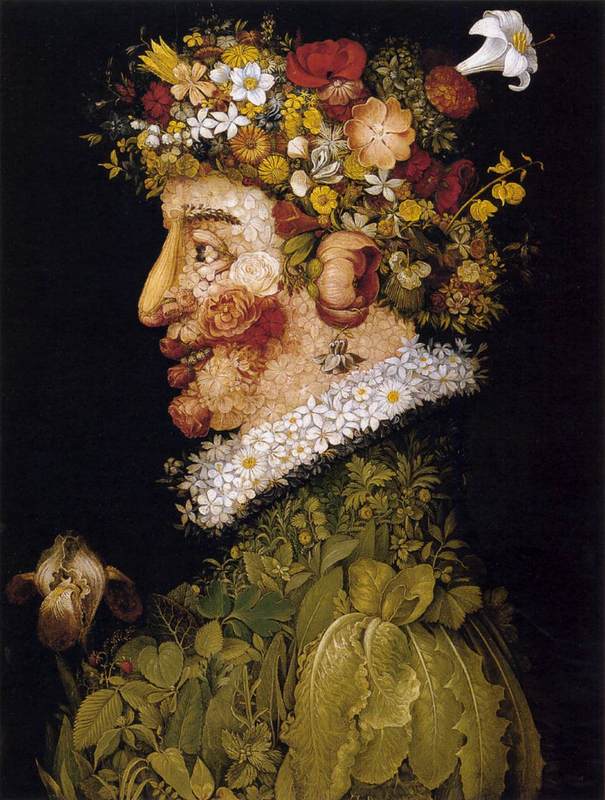Spring

Giuseppe Arcimboldo, "Spring," from Four Seasons, 1563. Oil on oak wood, 66 x 50 cm, Museo de la Real Academia de San Fernando, Madrid
Spring, with the thawing of the cold and snowy winter, brings with it the beginnings and promise of new life. Closely associated with Mother Earth, Arcimboldo’s “Spring”, the first in his Four Seasons series, takes the form of a youthful woman composed entirely of flowers and bright green leaves. Arcimboldo enlivens her skin in using a variety of flesh-toned and white blossoms create her face, while her flushed cheeks are sculpted from actual roses. She wears a dress created by varying pieces of greenery, from the tiniest strawberry stems to the larger leaves of a dandelion plant, while a ruff of white flowers separates her face from her gown. Rather than shaping her hair from a set of carefully chosen and similar shade of flowers, Arcimboldo crowns her with the very best blooms that spring can offer. Their bright shades call to mind the glory and brilliance of spring and the color it brings to the world after the darkness and flatness of winter. "Spring" is also a painting that embraces both the characteristics of portraits as well as still life paintings. Though the flowers depicted may very well be spring blossoms, it is highly unlikely that all would be blooming at the same time. The careful arragement of these that somewhat flouts the lines of nature also begins to align these images with the idea of the kunstkammer, or cabinets of curiousities, that were popular with the wealthy upperclass at the time. The figure smiles, and in her expression one can see that she is fully aware of her beauty and the joy that looking upon her countenance will bring to a viewer. Her youth and beauty are a fitting opening to the series, and the beginnings of the cycle of life and the seasons.